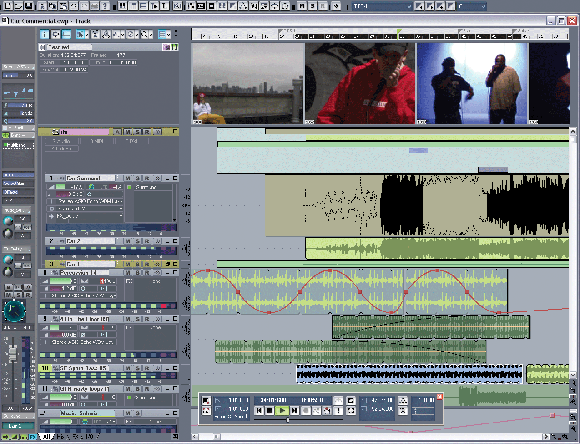
Pierre Hilaire writes:
Thank you for taking my e-mail. I am a Recording Engineer who has [Cakewalk] SONAR Producer Edition Software. Can I Master songs on SONAR? I know the ideal mastering tool is Pro Tools, but how about SONAR?
This sounded like an important opportunity to correct some common misinformation — namely, that Pro Tools is the only “real” digital audio tool. Secondly, mastering, which traditionally meant making a final 2-track stereo mix from which you could produce a stereo record (though a master these days might be in surround), is a process that can be done in any Digital Audio Workstation app.
Different DAWs have different facilities for mastering, so I went to the source, and ask Steve Thomas from Cakewalk. Steve has some great insider insight into what SONAR can do on the mastering front. Read more for Steve’s answer . . .
“Peter: thanks for the opportunity. Of course, it’s not a question easy to answer in a few sentences. First I am curious as to why Pierre believes PT provides the “ideal mastering tool” and, of course very pleased to see he uses SONAR PE. As we know Pro Tools like SONAR are DAWs that provide powerful music production tools and, unlike two-track digital audio editing programs designed specially for “Mastering” they provide more overall flexibility.”
“One of the most powerful features in SONAR introduced with Version 3 is Universal Bus Architecture. This feature provides dynamic bussing flexibility at its best: route buses to other buses or to the main outputs; use buses for subgroups, effect sends, headphone mixes, alternate monitor mixes, or insert buses on the fly pre- or post-fader, yes and of course there’s more ;-)”
“So, when it comes to mastering a project in SONAR its flexible bussing is key. All you do is assign certain tracks to busses then bounce those tracks out. You can think of this as creating subgroups or for a more sophisticated term “stems.” Now you have your guitar, bass, drums, and vocal all on separate tracks, all at unity gain. So, if you need a little EQ boost at 1.5 K to punch up the vocal you are not shrilling out the high hat or affecting the guitars. If you need to compress the bass a little more you are not squashing the entire mix! Once you are satisfied with the tweaking of the plugs you have on all your subgroups or stems then, bounce all down to a stereo mix. And, at that point if you feel the entire mix could use a little sparkle then, add a 1 or 2 db bump at 12k, it works wonders ;-)”
Other SONAR features that can help:
SONAR has Pow-r dithering and plenty of options to tweak the algorithm to fit your project Ed: High-quality dithering algoirthms mean that when you go from higher audio resolution to lower, as you would when mastering a 16-bit CD from a 24-bit project, for instance. And yes, Pow-r dithering is a very good thing. -PK
SONAR’s bussing makes it easy to audition effect chains (A/B’ing).
Using markers and SONAR’s looping, users can quickly target loud and soft passages to test their FX chain (a slightly different form of A/B’ing)
Bus Envelopes: very helpful for setting up fades and crossfades while mastering from stems
MIDI control of external gear: Ok, this one is for experts – you can use SONAR to automate MIDI-capable outboard FX units. So, for those who own say a Weiss EQ1, you can change EQ settings automatically via MIDI to better match each song in your project.
So, Pierre, hope this is useful to you. Let us know how it goes!